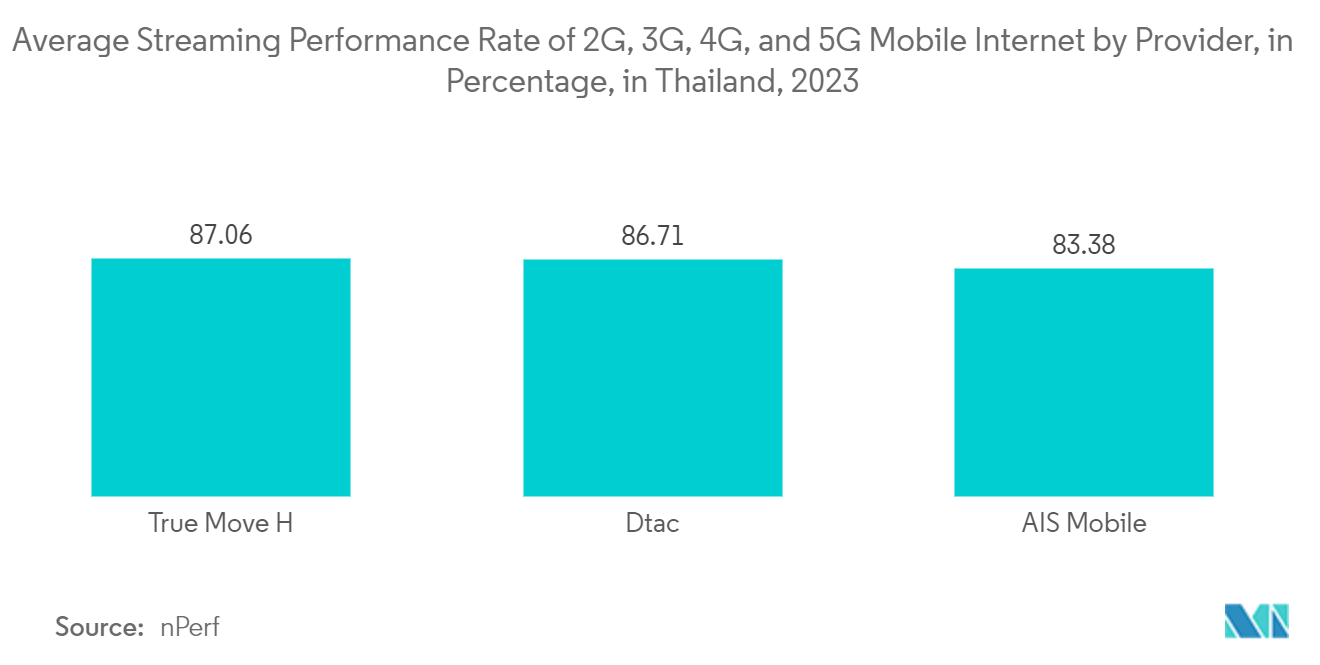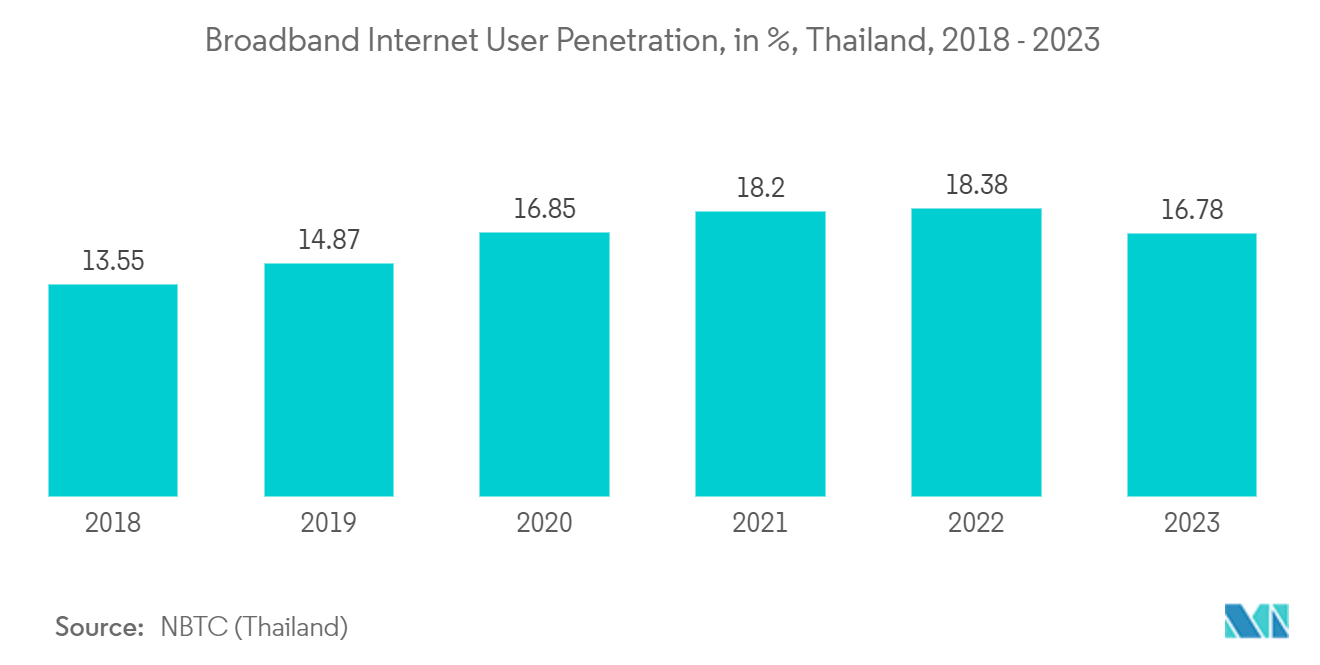Market Trends of Thailand Telecom Towers Industry
High Rooftop Installation Augment's the Market Growth
- The growing adoption of rooftop towers has contributed to the market’s expansion. In urban areas with space constraints, rooftop towers provide a viable solution to enhance network coverage.
- The increased deployment of these towers is aligned with the growing trend of network sharing, where multiple telecom operators share the same tower infrastructure to reduce costs and expedite network rollout.
- The telecom towers market in Thailand is growing robustly, driven by rising mobile data usage, 5G deployment, rural connectivity initiatives, and the expansion of tower infrastructure by both telecom operators and independent tower companies. The future of the market looks promising, with further investments expected in both urban and rural regions to cater to the increasing demand for seamless and fast connectivity.
- In March 2023, Telenor Asia introduced the completion of the amalgamation of the telco operations of True and dtac in Thailand. True Corporation, the newly formed entity, is strategically positioned to meet Thailand's surging demand for high-speed data and to seize growth opportunities in the rapidly evolving digital landscape. By harnessing the strengths of both True and dtac, this new entity is set to emerge as a telecom tech powerhouse, spearheading the digitalization wave in Thailand.
- Rooftop installations are contributing to the increased collaboration between telecom operators and property owners. This collaboration is leading to new revenue streams for building owners, who can lease rooftop space to telecom companies. In turn, this has led to a surge in the number of available sites for rooftop towers, further fueling market growth. The scalability and flexibility of rooftop installations are also appealing to operators looking to deploy small cells and other network-enhancing technologies in urban settings.

Renewable Fuel Type Drive the Market's Growth
- The Thailand telecom towers market has seen significant growth, driven by the rising adoption of renewable fuel types for powering telecom infrastructure. As the Thai government emphasizes sustainability and environmental responsibility, the telecom sector is responding by incorporating renewable energy sources like solar and wind power into their operations.
- The adoption of renewable fuels has provided telecom operators with a more sustainable and cost-effective solution, reducing dependency on diesel generators, which are expensive to operate and maintain. Solar-powered telecom towers, in particular, have become more prevalent, especially in rural and off-grid areas, where they offer a reliable alternative to conventional energy sources. These solar solutions are further supported by advancements in energy storage technologies, such as batteries, which ensure continuous power supply even when sunlight is insufficient.
- In November 2023, the Thailand Board of Investment (BOI) approved investment promotion applications worth a combined THB 41 billion (USD 1.1 billion) in projects including the manufacturing of electric vehicles (EV), the generation of renewable energy from waste, data centers, as well as travel and tourism infrastructure and equipment.
- The increasing penetration of broadband internet in Thailand is significantly boosting the demand for reliable telecom infrastructure, driving the growth of renewable fuel types in the telecom towers market. As more consumers and businesses require uninterrupted connectivity, telecom providers are adopting renewable energy solutions to ensure consistent power supply, especially in off-grid or remote areas. This shift toward renewable fuels not only enhances operational efficiency but also aligns with sustainability goals, making it a strategic choice for telecom companies to support the expanding broadband network.
- Overall, the integration of renewable fuel types into the Thai telecom towers market is driving significant growth, improving operational efficiency, reducing environmental impact, and enhancing the sector's long-term sustainability. This trend is expected to continue as technology advances, government policies evolve, and the global focus on sustainability intensifies.


